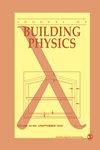识别 15 种 CIE 标准天空的机器学习方法比较研究
IF 1.8
4区 工程技术
Q3 CONSTRUCTION & BUILDING TECHNOLOGY
引用次数: 0
摘要
对于节能建筑设计而言,根据 CIE 标准天空得出的太阳辐照度和日光照度非常有用。随着时间的推移,天空亮度分布已被用来确定这些标准天空,但这些标准天空很少被测量。因此,使用现有的气候变量已成为一种可行的替代方法。不过,有必要确定这些气候变量能否正确识别这些天空。本研究利用香港测量到的气候数据对标准天空进行分类,以解决缺乏亮度分布测量的问题。使用机器学习(ML)方法改进了分类方法。在比较分析中,使用了五种常用的 ML 分类算法,即决策树 (DT)、k-nearest neigbhour (KNN)、光梯度提升机 (LGBM)、随机森林 (RF) 和支持向量机 (SVM)。结果显示,DT、KNN、SVM、LGBM 和 RF 模型的准确率分别为 68.1%、73.1%、74.3%、74.5% 和 75.4%。同样,DT、KNN、SVM、LGBM 和 RF 模型的 F1 分数分别为 66.6、70.2、71.8、72.1 和 72.9%。结果表明,RF 模型的性能最佳,而 DT 模型的性能最低。同时,获得的准确率和 F1 分数表明,所有模型都能以合理的准确率对标准天空进行分类。此外,还进行了特征重要性分析,结果发现 Kd、Tv、Kt、α、sun 和 cld 是天空分类最重要的输入参数。最后,利用拟议模型预测的天空估算了垂直太阳辐照度(GVT)和照度(GVL)。预测结果显示,太阳垂直辐照度从 14.7% 到 24.6% 不等,而照度从 13.8% 到 19.9% 不等。一般来说,大多数预测结果都小于 20%,这表明模型获得了良好的预测结果。本文章由计算机程序翻译,如有差异,请以英文原文为准。
A comparative study of machine learning methods for identifying the 15 CIE standard skies
For energy-efficient building designs, the solar irradiance and daylight illuminance derived from the CIE standard skies are useful. Over time, the sky luminance distributions have been used to identify these standard skies, but these are sparingly measured. Thus, the use of available climatic variables has become a viable alternative. Nevertheless, it is necessary to determine if these climatic variables could correctly identify these skies. This study addresses the lack of luminance distribution measurement by classifying the standard skies using measured climatic data in Hong Kong. The classification approach was improved by using the machine learning (ML) method. For comparative analysis, five popular ML classification algorithms i.e., decision tree (DT), k-nearest neigbhour (KNN), light gradient boosting machine (LGBM), random forest (RF) and support vector machines (SVM) were used. The findings show that accuracies of 68.1, 73.1, 74.3, 74.5, and 75.4% were obtained for the DT, KNN, SVM, LGBM, and RF models, respectively. Similarly, the F1 scores were 66.6, 70.2, 71.8, 72.1 and 72.9%, for the DT, KNN, SVM, LGBM, and RF models. The result shows that the RF model gave the best performance while DT performed the least. Also, the obtained accuracies and F1 scores show that all models would classify the standard skies with reasonable accuracy. Furthermore, feature importance was done, and it was found that Kd , Tv , Kt , α, sun, and cld are the most important input parameters for sky classification. Lastly, vertical solar irradiance ( GVT ) and illuminance ( GVL ) were estimated using the skies predicted by the proposed models. Upon predictions, it was observed that the GVT ranged from 14.7 to 24.6% while the GVL from 13.8 to 19.9%. Generally, most of the predictions were less than 20%, which shows good predictions were obtained from the models.
求助全文
通过发布文献求助,成功后即可免费获取论文全文。
去求助
来源期刊

Journal of Building Physics
工程技术-结构与建筑技术
CiteScore
5.10
自引率
15.00%
发文量
10
审稿时长
5.3 months
期刊介绍:
Journal of Building Physics (J. Bldg. Phys) is an international, peer-reviewed journal that publishes a high quality research and state of the art “integrated” papers to promote scientifically thorough advancement of all the areas of non-structural performance of a building and particularly in heat, air, moisture transfer.
 求助内容:
求助内容: 应助结果提醒方式:
应助结果提醒方式:


